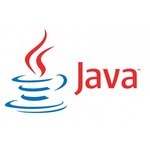
如何使用Java开发一个基于微服务架构的应用系统
随着云计算、大数据和物联网的快速发展,微服务架构作为一种开发应用系统的新兴架构模式,因其强大的弹性、可扩展性和灵活性而受到越来越多的关注。本文将介绍如何使用Java开发一个基于微服务架构的应用系统,并给出具体的代码示例。
一、微服务架构简介
微服务架构是一种架构模式,将应用系统拆分为一系列的小型服务,每个服务都可以独立部署、独立运行和独立开发。每个服务都有自己的数据库,并通过网络进行通信。这种架构的优势在于可以加快开发速度、提高系统的灵活性和可扩展性。
立即学习“Java免费学习笔记(深入)”;
二、基于Spring Boot的微服务架构
Spring Boot是一个开源的、轻量级的Java开发框架,适合用于开发微服务架构。它提供了一套简单、易用的功能,包括自动配置、快速启动和监控等。下面是一个基于Spring Boot的微服务架构的示例代码:
@SpringBootApplication
public class MainApplication {
public static void main(String[] args) {
SpringApplication.run(MainApplication.class, args);
}
}@RestController
public class HelloController {
@GetMapping("/hello")
public String hello() {
return "Hello, World!";
}
}@Configuration
public class ServiceDiscoveryConfig {
@Bean
public DiscoveryClient discoveryClient() {
return new EurekaDiscoveryClient();
}
}@Configuration
public class LoadBalancerConfig {
@Bean
public LoadBalancer loadBalancer() {
return new RoundRobinLoadBalancer();
}
}@Configuration
public class CircuitBreakerConfig {
@Bean
public CircuitBreaker circuitBreaker() {
return new HystrixCircuitBreaker();
}
}三、基于Docker的微服务部署
为了更好地管理和部署微服务,我们可以使用Docker容器化技术。Docker可以将服务及其依赖项打包成一个独立的容器,并在任何环境中运行。下面是一个基于Docker的微服务部署的示例代码:
FROM openjdk:8-jdk-alpine COPY target/application.jar /app/ CMD ["java", "-jar", "/app/application.jar"]
$ docker build -t application .
$ docker run -p 8080:8080 application
四、微服务架构的关键挑战和解决方案
微服务架构虽然有很多优势,但也面临一些挑战,例如服务间的通信、分布式事务管理和服务监控等。为了解决这些问题,我们可以使用以下的解决方案:
结论
本文介绍了如何使用Java开发一个基于微服务架构的应用系统,并给出了具体的代码示例。通过采用微服务架构,我们可以更好地划分应用系统的功能,并实现可扩展、弹性和灵活的应用系统。希望本文对你的Java微服务开发有所帮助。
以上就是如何使用Java开发一个基于微服务架构的应用系统的详细内容,更多请关注php中文网其它相关文章!

java怎么学习?java怎么入门?java在哪学?java怎么学才快?不用担心,这里为大家提供了java速学教程(入门到精通),有需要的小伙伴保存下载就能学习啦!

Copyright 2014-2025 https://www.php.cn/ All Rights Reserved | php.cn | 湘ICP备2023035733号